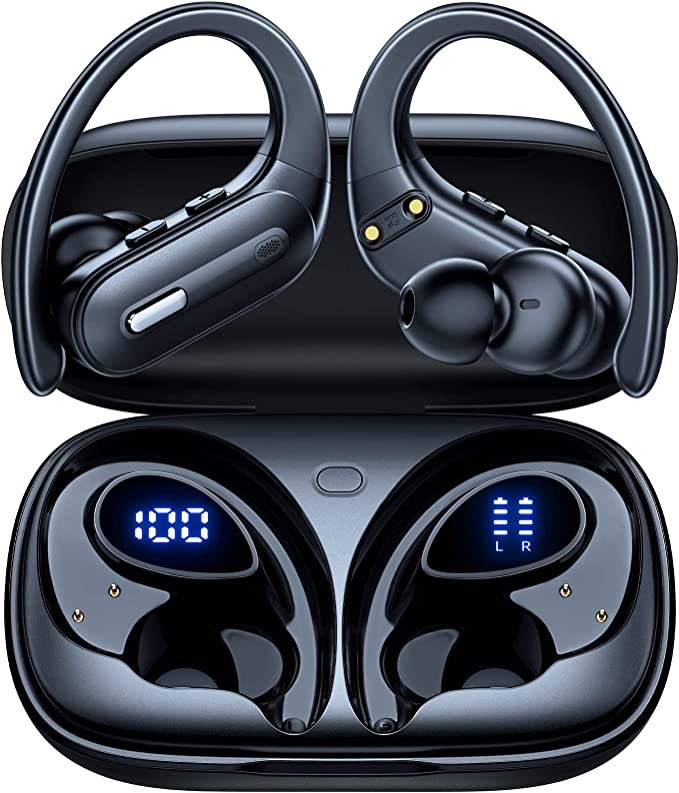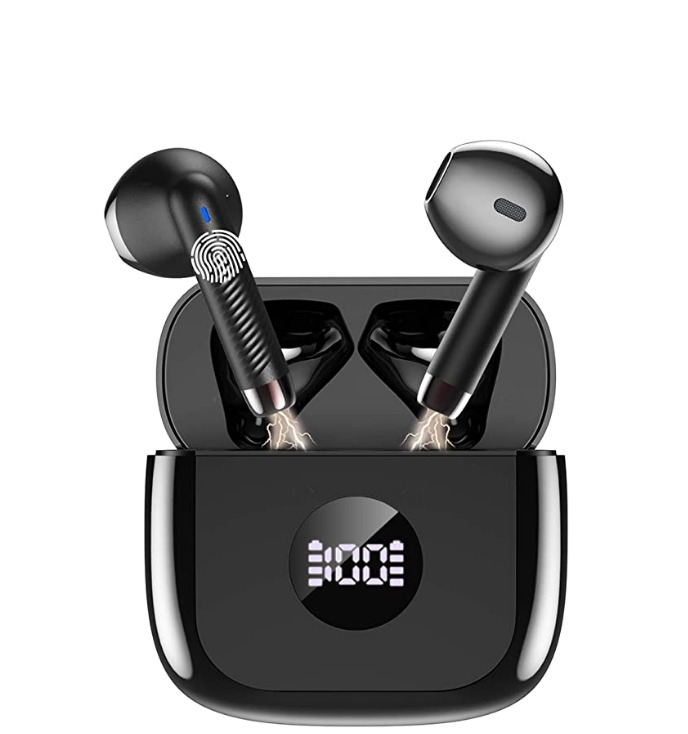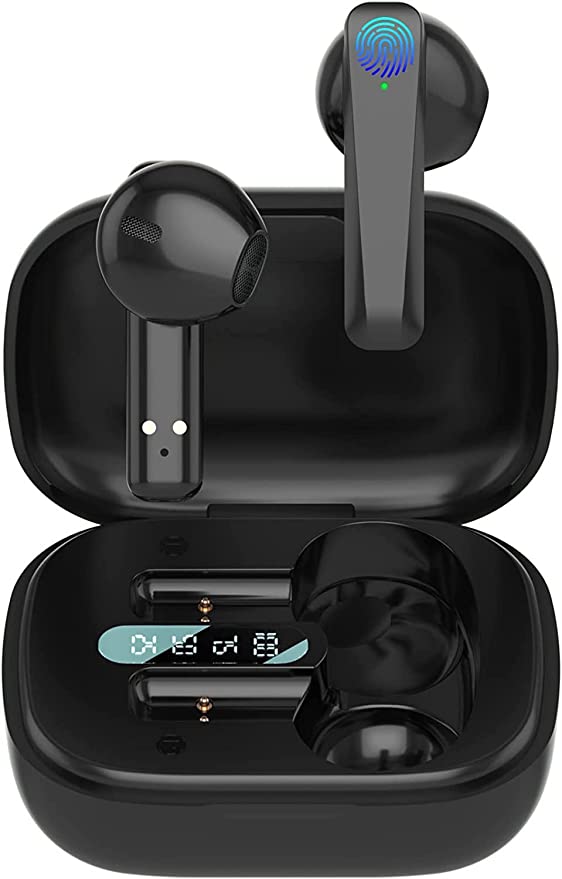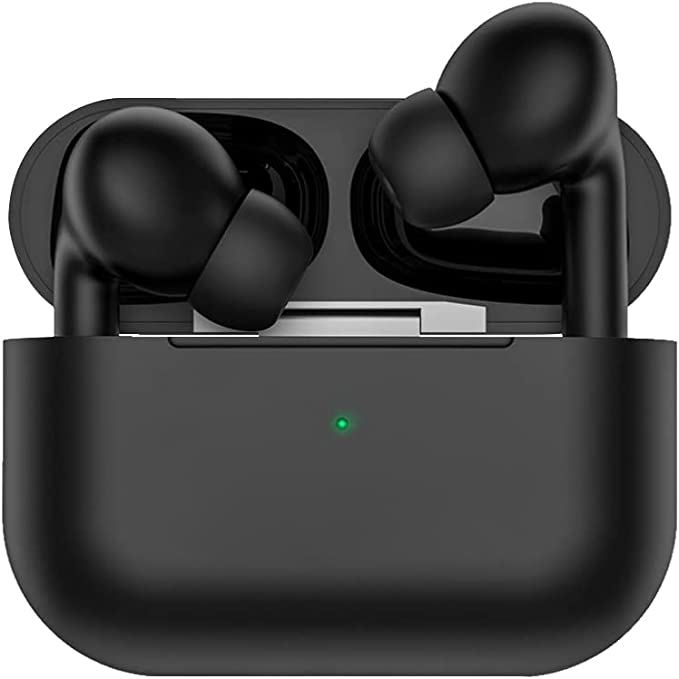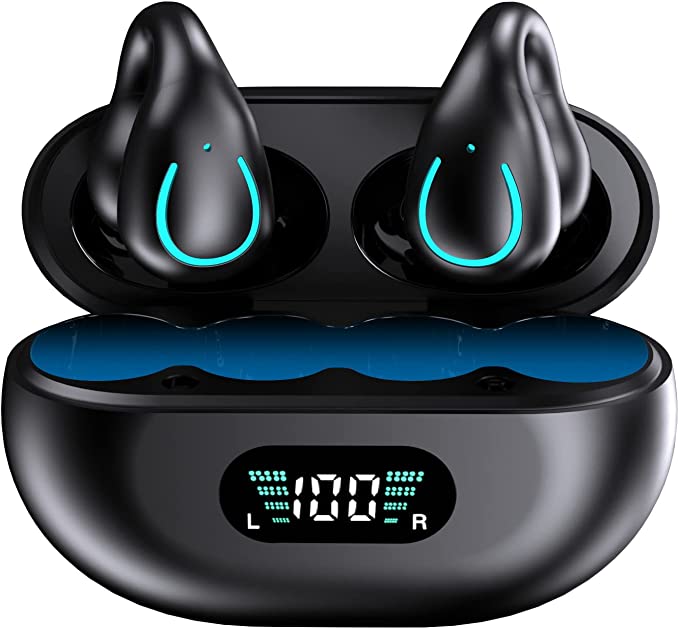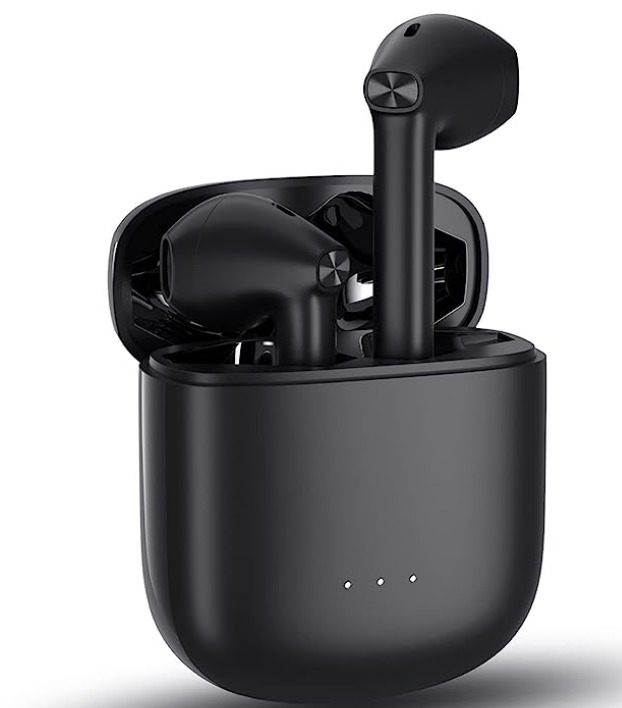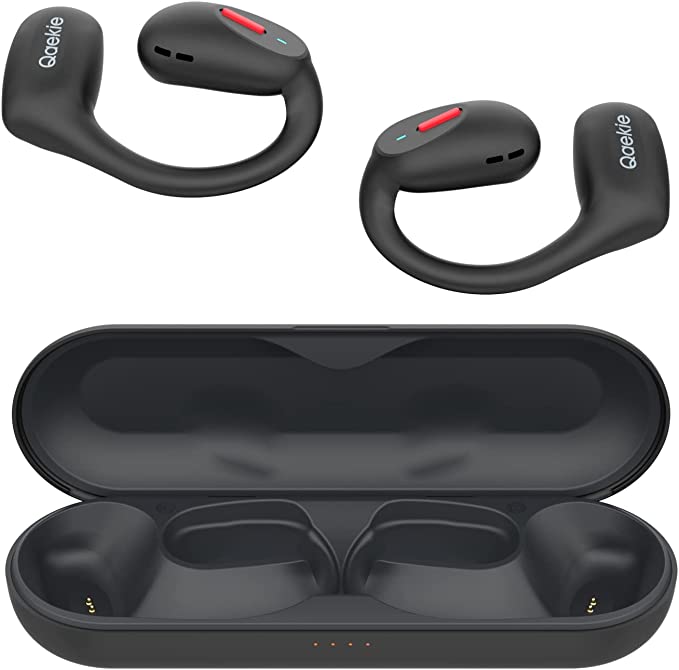LOBKIN S22 Wireless Headphones: Unpacking the Science of All-Day Audio Comfort and Wireless Freedom
Update on May 15, 2025, 4:59 a.m.
In our hyper-connected, constantly moving world, personal audio is no longer a luxury but an integral thread in the fabric of daily life. We rely on headphones to deliver a motivating soundtrack for our workouts, provide a sanctuary of focus amidst chaos, connect us with colleagues across continents, or simply to unwind with immersive music and captivating podcasts. The LOBKIN S22 Wireless Headphones, with features like extended playtime and modern Bluetooth connectivity, present an interesting case study in how current technology strives to meet these diverse demands. But beyond the bullet points on a product page, lies a fascinating interplay of physics, material science, and engineering. Let’s peel back the layers and explore the science that makes such everyday companions possible.

The Unseen Powerhouse: Decoding Extended Battery Life and Rapid Rejuvenation
One of the most common frustrations in the wireless era is the dreaded “low battery” chime, often striking at the most inconvenient moments. The LOBKIN S22 headphones tackle this head-on, boasting an impressive up to 40 hours of playtime. This isn’t just a random number; it’s a testament to the remarkable advancements in lithium-ion battery technology and sophisticated power management systems.
Imagine your headphone battery as a highly efficient, miniature energy backpack. Modern lithium-ion cells are prized for their high energy density, meaning they can store a significant amount of electrical charge in a relatively small and lightweight package. This is crucial for wearable devices where both size and weight are paramount. The “up to 40 hours” figure also hinges on the headphones’ overall power efficiency. Components like the Bluetooth chip and audio amplifiers are designed to sip, rather than gulp, energy. Sophisticated power management integrated circuits (PMICs) act like intelligent traffic controllers, optimizing power flow to different parts of the headphones and minimizing wastage, especially during standby or low-intensity use.
But what happens when that energy backpack eventually runs dry? The LOBKIN S22 offers a rapid refueling stop, claiming a full charge in just 1.5 to 2 hours. This fast-charging capability relies on carefully controlled electrical currents. Specialized charging circuits within the headphones and compatible chargers allow for a higher-than-standard current to be delivered to the battery, particularly during the initial phase of charging, without compromising its long-term health. Think of it like filling a water bottle – you can open the tap wider at first when the bottle is empty, then gradually reduce the flow as it nears full to prevent spillage.
And for those moments when time is truly of the essence, or a power source is unavailable, the included 3.5mm audio cable provides a steadfast analog backup. This venerable connection, a descendant of early telephone switchboard plugs from the 19th century, bypasses the internal battery and digital electronics entirely. It transmits audio as a continuous electrical wave directly from the source to the headphone drivers. It’s a beautifully simple application of electrical physics, offering a reliable, unpowered listening option that ensures the music never truly has to stop. This dual wireless and wired functionality makes the LOBKIN S22 a versatile option, particularly for those who might find themselves on a long flight after forgetting to charge, or wanting a latency-free connection for gaming or music production.

The Art of Connection: Understanding Bluetooth 5.3 and Seamless Audio Streaming
The magic of wireless audio hinges on technologies like Bluetooth, a short-range wireless communication standard that has become ubiquitous. The LOBKIN S22 headphones feature Bluetooth 5.3, one of the more recent iterations of this protocol. This isn’t merely an incremental update; it brings tangible improvements to the user experience, focusing on stability, efficiency, and connection management.
At its core, Bluetooth operates by transmitting data, including your audio, in small packets over radio waves in the 2.4 GHz Industrial, Scientific, and Medical (ISM) band. Bluetooth 5.3 introduces refinements like enhanced connection robustness. It’s better at navigating the crowded radiofrequency environment we live in, where Wi-Fi signals, microwaves, and other Bluetooth devices are all vying for airtime. It does this through improved channel classification and adaptive frequency hopping, essentially being smarter about choosing the clearest “lanes” for communication, leading to fewer dropouts and a more stable audio stream, even up to a claimed 33 feet of range.
Power efficiency is another hallmark of Bluetooth 5.3, particularly benefiting from features carried over and enhanced from Bluetooth Low Energy (LE) specifications. While streaming high-quality audio is inherently more power-intensive than simple data bursts from a fitness tracker, every optimization in the protocol helps extend that precious battery life, contributing to the S22’s long playtime.
The LOBKIN S22 also highlights MultiPoint Connection, allowing the headphones to be actively connected to two source devices simultaneously—perhaps your laptop for work and your smartphone for personal calls. This convenience is managed by the Bluetooth protocol’s ability to handle multiple links and switch between them. For example, you could be listening to music from your laptop, and if a call comes in on your phone, the headphones can intelligently switch audio sources.
When it comes to calls, the “built-in HD mic” is crucial. While “HD” can be a somewhat general term in marketing, in the context of microphone technology for communication, it usually implies a wider frequency response capture for voice, making it sound more natural and less “muffled” than older, more band-limited microphones. The real challenge for any headphone microphone, especially in an over-ear design where the mic is not directly in front of the mouth, is isolating the user’s voice from ambient noise. This often involves sophisticated algorithms like noise suppression and beamforming (though not explicitly stated for the S22, these are common techniques in the industry) that try to differentiate voice signals from background chatter or environmental sounds. It’s worth noting that Bluetooth uses different profiles for different tasks: A2DP (Advanced Audio Distribution Profile) is typically used for high-quality stereo music streaming, while HFP (Hands-Free Profile) is used for calls. HFP often uses more compressed audio to ensure lower latency for two-way conversation, which can sometimes lead to a perceived difference in audio quality between music playback and call audio, a common characteristic across many Bluetooth headphones.

The Pursuit of Faithful Sound: Exploring “Hi-Fi” and Over-Ear Acoustics
LOBKIN describes the S22 as “Hi-Fi Bluetooth Headphones” designed to deliver “deep bass and crystal clear highs.” The term “Hi-Fi,” or High-Fidelity, has been a goal in audio reproduction since the mid-20th century. It fundamentally means that the sound reproduced by the headphones should be as faithful as possible to the original audio recording, with minimal distortion, noise, or alteration of the intended sonic character.
Achieving this involves careful design of the audio drivers – the miniature speakers housed within each earcup. While the specific driver technology in the S22 isn’t detailed in the provided information, most headphones in this category use dynamic drivers. These drivers work on a principle similar to larger loudspeakers: an electrical audio signal passes through a voice coil attached to a diaphragm (a thin, flexible cone or dome). The current creates a fluctuating magnetic field that interacts with a permanent magnet, causing the diaphragm to vibrate rapidly. These vibrations create pressure waves in the air – the sound waves that our ears perceive. The material and geometry of the diaphragm, the strength of the magnet, and the design of the voice coil all significantly impact the sound quality, including the ability to reproduce deep bass frequencies and clear high frequencies.
The over-ear (or circumaural) design of the LOBKIN S22 also plays a significant role in the listening experience. By completely encircling the ear, the earcup creates a relatively sealed acoustic chamber. This has several benefits:
- Passive Noise Isolation: The physical barrier of the earcup and cushion helps to block out some ambient sounds from the environment. This allows you to listen at lower volumes and hear more detail in your music, especially in noisy surroundings like an airplane cabin or a busy office. It’s like cupping your hands around your ears to hear a faint sound better.
- Improved Bass Response: The sealed chamber can enhance the perception of bass frequencies. Low-frequency sound waves are longer and require more energy; the enclosed volume allows these waves to develop more fully before reaching the ear, often resulting in a richer, more impactful bass.
- Consistent Listening Environment: By creating a mini-environment around each ear, over-ear headphones can provide a more consistent sound experience, less affected by the precise positioning on the head compared to on-ear or in-ear designs.
The aim for “deep bass and crystal clear highs” speaks to a desired frequency response curve. Human hearing typically spans from about 20 Hz (deep bass) to 20,000 Hz (very high treble). A Hi-Fi system ideally reproduces this range smoothly and evenly, without excessively boosting or cutting certain frequencies, unless intentionally designed for a specific sound signature (like “bass-heavy” for certain genres).

Material Science Meets Ergonomics: The Comfort Equation for Extended Wear
Beyond the electronics and acoustics, the physical comfort of headphones is paramount, especially for devices designed for long listening sessions. The LOBKIN S22 addresses this with an adjustable headband and ear cushions made from memory protein earmuffs.
The term “memory protein” typically refers to a type of high-density, viscoelastic polyurethane foam, often simply called memory foam. Originally developed by NASA in the 1960s to improve seat cushioning and crash protection for airline pilots, this remarkable material has found its way into countless consumer products. Its defining characteristic is its ability to slowly conform to the shape of an object pressing against it (like your ears and the sides of your head) and then gradually return to its original shape once the pressure is removed. This creates a custom fit that distributes pressure more evenly than conventional foam, reducing pressure points that can lead to discomfort over time. This even distribution is key to wearing headphones for hours on end, whether you’re engrossed in a gaming session on your PC or working through a long playlist at the gym.
The product description also mentions these earmuffs are “breathable, waterproof, [and] wear-resistant.”
- Breathability is important for comfort, as a completely airtight seal can lead to heat and moisture buildup around the ears. Materials that allow some air to circulate can mitigate this.
- “Waterproof” in the context of headphone earmuffs usually implies a good degree of sweat resistance or resistance to light moisture. This is a valuable feature for gym use or wearing them in light rain, protecting the internal components and maintaining the integrity of the cushion material. An official IP (Ingress Protection) rating would give a more precise measure of this.
- Wear-resistance speaks to the durability of the outer layer of the earpad material, suggesting it’s designed to withstand the rubbing and flexing of daily use.
The foldable and retractable design contributes to both portability and fit. Foldable hinges allow the headphones to collapse into a more compact form, making them easier to stow in a bag when traveling. The retractable (adjustable) mechanism in the headband ensures that the earcups can be positioned correctly over the ears for a wide range of head sizes and shapes, which is critical not only for comfort but also for achieving the optimal acoustic seal necessary for good sound quality. This blend of material science and ergonomic design is what allows you to almost forget you’re wearing them, letting the audio experience take center stage.

The Symphony of Integrated Technologies for the Modern Listener
The LOBKIN S22 Wireless Headphones, when viewed through a scientific lens, are more than just a way to listen to music. They represent a convergence of multiple technological fields. From the electrochemistry powering their extended life and the radio frequency engineering ensuring a stable Bluetooth connection, to the acoustic principles shaping their sound and the material science providing their comfort, each aspect is designed to enhance our interaction with the digital world.

Whether you’re seeking focus for your work on a PC, an energizing beat for your gym routine, clear communication for calls, or simply a comfortable and immersive audio escape at home, understanding the science and engineering packed into such everyday devices can deepen our appreciation for the seamless experiences they provide. The journey from raw materials and abstract principles to a polished, functional product like the LOBKIN S22 is a quiet symphony of innovation that plays out around us every day.
